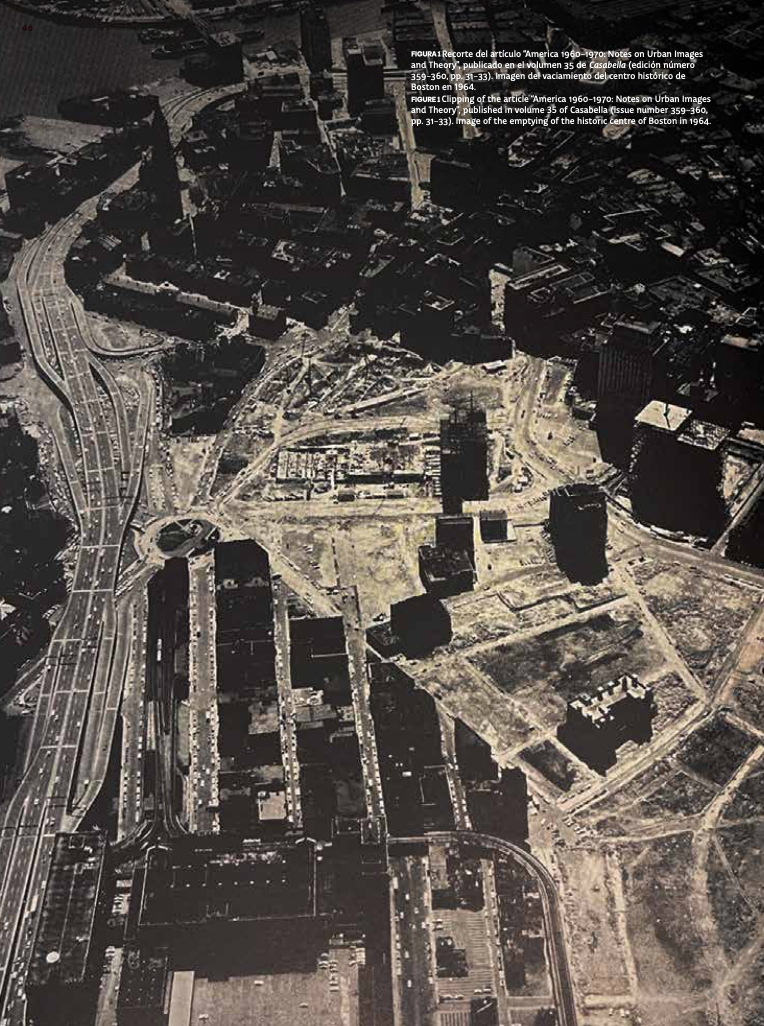Anti-Tabula Rasa: Toward a Critical Regionalism: The Refusal of Topography as the Political Neutralization of Architecture
Article Sidebar

Keywords:
Main Article Content
Abstract
This text analyses the forgotten political role of the theory of critical regionalism, exploring the idea of tabula rasa as a metaphor for ideological refusal. The text contextualizes the emergence of this theory in the intellectual journey of its author, Kenneth Frampton, and shows that the expression tabula rasa condensed the refusal of form and history in the image of the cancelation of topography. This, as a symbol of the ideological neutralization of architecture, operating as an antithesis for the formulation of a new theory.
Article Details

This work is licensed under a Creative Commons Attribution-NonCommercial 4.0 International License.
Materia Arquitectura provides immediate and free access to all the content of this online edition, published simultaneously with the print edition.
Materia Arquitectura does not charge authors for any concept.
All contents of this electronic edition are distributed under the Creative Commons license of "Attribución-shareAlike 4.0 Internacional" (CC-BY-SA).
The rights of the published texts and images belong to their authors, who grant Materia Arquitectura the license for their use. The management of the permits and the authorization of the publication of the images (or of any material) that contains copyright and its consequent rights of reproduction in this publication is the sole responsibility of the authors of the articles.
As long as they mention their origin, the authors are free to distribute their articles by other means. Any total or partial reproduction of the material must mention its origin.
Downloads
References
Arendt, H. (1958). The human condition. University of Chicago Press.
Avermaete, T., Patteeuw, V., Szacka, L.-C., & Teerds, H. (2019). Critical regionalism revisited. Oase, (103), 1–6.
Foster, H. (1983). The anti-aesthetic: Essays on postmodern culture. Bay Press.
Frampton, K. (1971). America 1960–1970: Notes on urban images and theory. Casabella, (359–360), 24–37.
Frampton, K. (1983a). Prospects for a critical regionalism. Perspecta, 20, 147–162.
Frampton, K. (1983b). Towards a critical regionalism: Six points for an architecture of resistance. En H. Foster (Ed.), The anti-aesthetic: Essays on postmodern culture (pp. 13–30). Bay Press.
Frampton, K. (1984). Anti-tabula rasa: Verso un regionalismo critico. Casabella, (500), 22–25.
Frampton, K. (1985). Modern architecture: A critical history. Thames & Hudson.
Frampton, K. (1998). Industrialization and the crisis in architecture. En K. M. Hays (Ed.), Oppositions reader: Selected essays 1973–1984 (pp. 39–64). Princeton Architectural Press.
Gregotti, V. (1984). Esplorazioni orientate. Casabella, (500), 2–3.
Habermas, J. (1983). Modernity: An incomplete project. En H. Foster (Ed.), The anti-aesthetic: Essays on postmodern culture (pp. 3–15). Bay Press.
Popescu, C. (2019). Flattening history: A prequel to the invention of critical regionalism. Oase, (103), 49–53.
Revisiting CASE: The Conference of Architects for the Study of the Environment, 1964–74. (n.d.). Archinect | Massachusetts Institute of Technology (MIT). https://archinect.com/mitarchitecture/event/revisiting-case-the-conference-of-architects-for-the-study-of-the-environment-1964-74
Rudofsky, B. (1964). Architecture without architects: A short introduction to non-pedigreed architecture. Museum of Modern Art.
Scott Brown, D. (1971). Learning from pop. Casabella, (359–360), 14–24.
Szacka, L.-C. (2017). Exhibiting the postmodern: 1980 Venice Architecture Biennale. Marsilio.
Szacka, L.-C., & Patteeuw, V. (2019, 22 de noviembre). Critical regionalism for our time. Architectural Review. https://www.architectural-review.com/essays/critical-regionalism-for-our-time
Venice Biennale (Ed.). (1980). Architecture, 1980: The presence of the past. Rizzoli.
Venturi, R. (1966). Complexity and contradiction in architecture. Museum of Modern Art.
Venturi, R., Izenour, S., & Scott Brown, D. (1972). Learning from Las Vegas: The forgotten symbolism of architectural form. MIT Press.